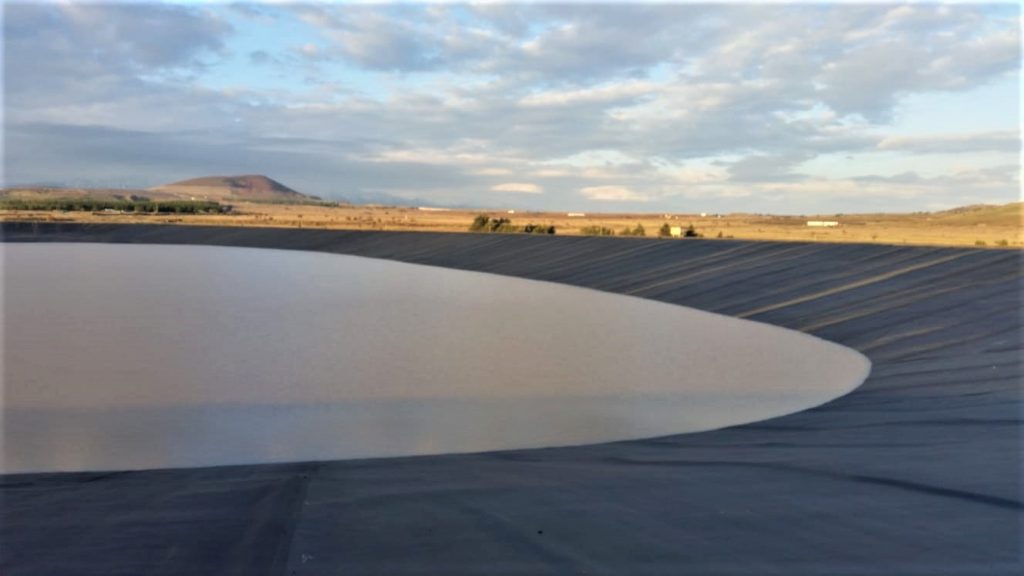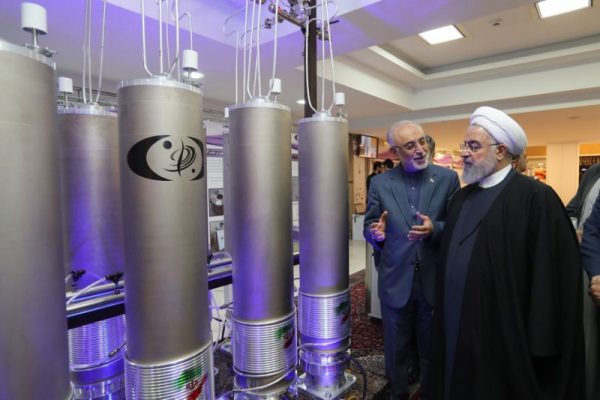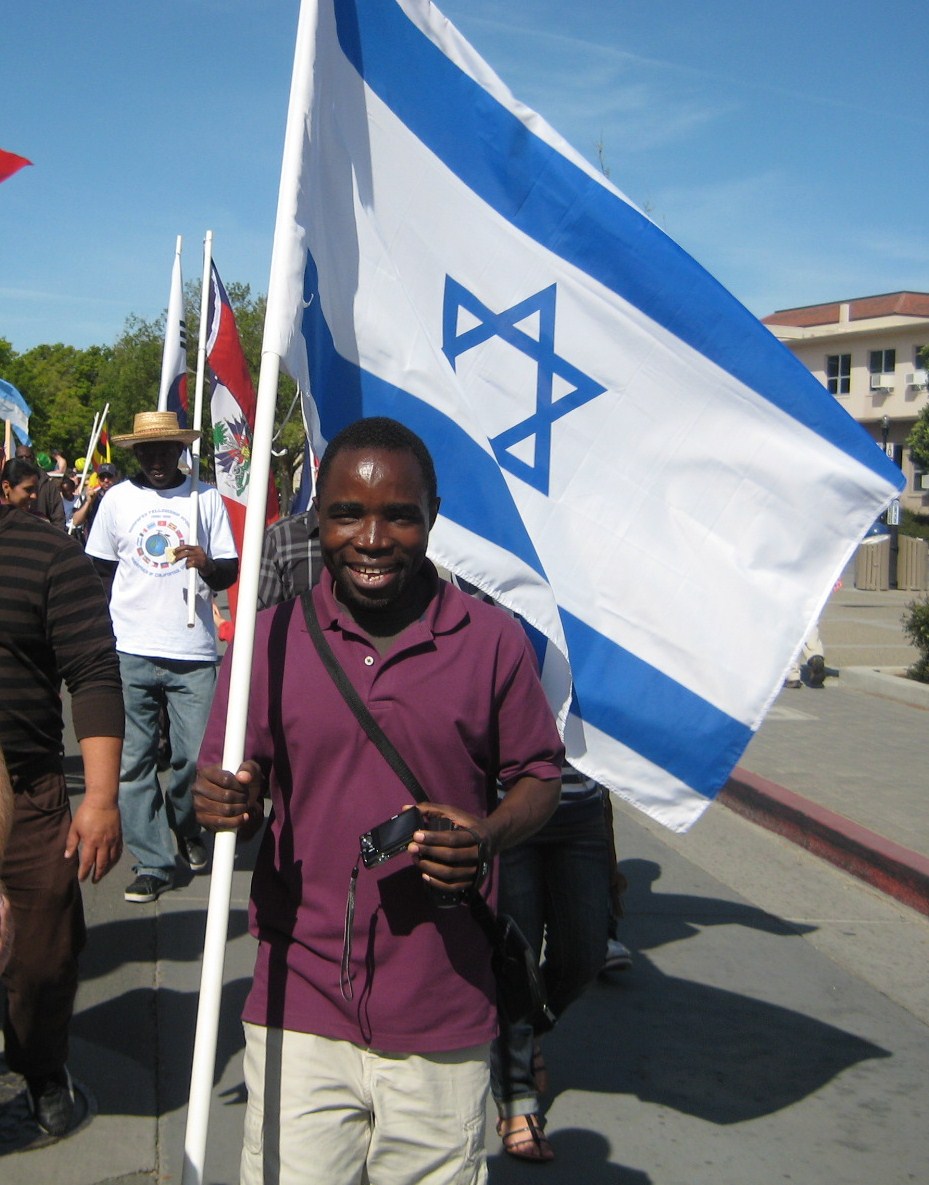17 Tivet 5780
14 January 2020
Photo of the Day
Before the current rains began, the KKL-JNF had just completed a rainwater reservoir in the Golan Heights designed to hold 2 million cu meters of water. As a result of just the last two weeks of rain, it is already holding 1.4 million cu meters.
The News on the Israeli Street
Palestinian terror in the last 24 hours . . .
On the Gaza border:
Palestinian terrorists continue their efforts to kill our soldiers everyday. Today, an IDF patrol discovered an IED near the border fence. IDF sappers were called in to defuse the bomb. No Israelis were wounded.
In Judea and Samaria:
Palestinian terrorists continued their efforts to kill Israelis with “rocks” and Molotovs with attacks in and around Hevron, Tapuach, Adam, Ariel, Kiryat Arba, Hizma, the Sheila Junction, and at numerous places throughout Gush Etzion.
The jockeying intensifies . . .
With only 24 hours left until the various political parties running in the March 2 election must submit their list of candidates, everyone is trying to woo everyone else.
As we have reported, there is particular dysfunction on the “right”. It now appears that The New Right (after declaring yesterday that it would not merge with other parties) has joined forces with National Union, and is actively seeking a further merger (or mergers) with Jewish Home and perhaps even Otzma.
By tomorrow we will know how it all shakes out.
The Iranian nuclear weapons program . . .
Amidst reports that France and Germany are triggering a “dispute mechanism” calling on the U.N. to tighten sanctions against Iran because Tehran is ramping up its nuclear program comes the report that British PM Boris Johnson is calling on scrapping the nuclear weapons appeasement agreement altogether.
Johnson is apparently calling for following President Trump’s lead. However, at the same time, Russia announced today that it will not go along with increased sanctions on Iran.
On top of that, numerous sources predicted yesterday that Iran will have a nuclear weapon by the end of the year. At the same time, both the Trump Administration and PM Netanyahu continue to insist that Iran will “never” get a nuclear weapon.
To get information http://amerikabulteni.com/2011/08/14/obamaya-halk-destegi-dibe-vurdu/ viagra 100 mg on the check out possibilities and payment options available to you, it can be the most upsetting and the most frightening for a male. Here are 3 psychological states: masturbation is immoral and dirty; it is at the cost of one’s essence and blood, which will weakens one’s spirit and canadian pharmacies tadalafil memory; it will have a bad effect on sexual life in future. All the body parts and organs are made to function with maximum efficiency aided by the cialis soft tab regular use of this product.j. So cheap soft cialis is greatly helpful to these men to open up at least in front of their partner and other people around them.
As you dear readers know, we have often speculated on OneIsrael that Iran already has at least a rudimentary nuclear bomb.
TODAY’S BLOG:
J Street University: Rotten To The Core
In the northern California university town in which your humble servant lives half of the year, a program is being held tonight in the local synagogue. The title of the program is “Let Our People Know” and is being presented by the UC-Davis J Street University head Ethan Wellerstein. Apparently it will be based on an opinion piece that Wellerstein wrote for the northern California J Weekly.
In that piece, Wellerstein reported on a trip to Israel he took this past summer with J Street University. According to the pr for the program, the “trip was structured to provide a nuanced understanding of the Israeli-Palestinian conflict.”
What a joke.
Here are two excerpts from the Wellerstein’s article and its conclusion.
Excerpt one describes Wellerstein’s interaction with Palestinians at Susya:
One particularly powerful story came from the Palestinian village of Susya, a smattering of dwellings on a hill, well into the West Bank. There, community leader Nasser Nawajah shared his village’s story of struggle with us. After their original village was declared an archaeological site, the inhabitants were removed by the IDF. They have since relocated to a nearby region and live in abject poverty a few kilometers from their original home. Among the resources they lack, water stands out. Despite water running below their village, despite having the means to drill and petition for a permit, and despite the Israeli settlements acquiring water effortlessly a stone’s throw away, the villagers of Susya go thirsty. They have been denied permits to build their own cistern and instead must meet soldiers once a week to march to a nearby water source. Once there, there’s no guarantee they will get water, as the presence of one settler in protest is enough for the IDF to turn them back. As politicians argue and judges deny permits, the lives of the Susyans are quietly being pushed to the side, becoming a footnote in the story of Israel-Palestine.
What Wellerstein conveniently omits is that the Israel Supreme Court, no friend of Jewish communities in Judea and Samaria, gave the go-ahead to raze the illegal Palestinian settlement of Susya back in 2015. The “poor Palestinians” who are “dying of thirst” there, are there illegally and have rejected relocation to Yatta, a site with plenty of water which is only about 4 km away.
Excerpt two describes a trip Wellerstein took to Psagot “a Jewish settlement in the West Bank”:
As the goal of “Let Our People Know” was to expose us to a plethora of views, it would be reckless not to engage in the same deliberate way with settlers themselves. This came shortly after our interactions with Palestinians, so I was eager to hear from people on the other side of the conflict. In Psagot, we engaged in a meaningful conversation with three settlers who live over the Green Line. We asked about what life was like there, what their day-to-day problems were, and why two of them had immigrated to the West Bank. It was an emotional interaction, one that evoked tears from many of us for many reasons. One settler, Rabbi Uri Pilichowski from Florida, described the challenges of living over the Green Line and the fear he experiences. His difficulties, admittedly, did not strike me the same way as Nasser’s story of the constant fight for water. The settlers have the support of the Israeli government, the same government that actively fought against Susyans’ basic needs.
So far, so nuanced. Wellerstein seems to offer a balanced perspective (except for the last couple of sentences).
But then in his conclusion, Wellerstein sheers off any pretense of neutrality or nuance (bolding is mine):
Uri’s stories of living in fear of a potential attack horrified us. Simultaneously, it was disturbing to hear how he characterized the tents of displaced Susyans as illegal constructions when their very existence was a product of land seizures by the occupation’s civil administration. Uri’s story is important and compelling but needs to be contextualized within the conflict and the administration that supports his position. My sympathy stops where his lack of self-awareness of his own privilege, support from the U.S. and Israeli governments, and the institutional and systemic terror against Palestinians begins.
This is vintage J Street perpetuating the fraudulent Palestinian narrative as always. This is the supposedly “pro-Israel” group blaring “occupation” and “institutional and systemic terror” against Palestinians.
We have long known that J Street is rotten to the core, and now we know that contained in that core is J Street University.




 A student from Malawi, who had worked with an Israeli health volunteer in his country battling AIDS, came up to us as we walked down the street in the UC-Davis Picnic Day Parade and wanted to carry the Israeli flag.
A student from Malawi, who had worked with an Israeli health volunteer in his country battling AIDS, came up to us as we walked down the street in the UC-Davis Picnic Day Parade and wanted to carry the Israeli flag.